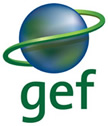Climate change vulnerability assessments
Name
Lakes of Ounianga
WDPA ID
555547987
Country
TCD
IUCN category
Not Applicable
Lakes of Ounianga is among the top 75 protected areas assessed as being the most vulnerable to climate change by 2025 (with a 95% uncertainty level)
Species vulnerable to climate change
According to Traits-based Vulnerability Assessments (TVAs)
| Vulnerable Species | Total Species | ||
|---|---|---|---|
| Amphibian |
N/A
|
N/A
|
|
| Bird |
9
|
45
|
|
| Mammal |
5
|
11
|
|
| Total | 14 |
56 |
25 % of bird, amphibian, and mammal species assessed are considered vulnerable to climate change
Expected species turnover
According to Species Distribution Models (SDMs)
Percentage of species turnover: Median (95% Confidence Interval)
| by 2010-2039 | by 2040-2069 | ||
|---|---|---|---|
| Bird |
|
|
|
| Mammal |
|
|
|
| Amphibian |
|
|
Vulnerable species
| Name | Order | Exposure by 2010-2039 by 2040-2069 |
IUCN Red List category | Sensitivity to climate change |
Adaptability to climate change |
|---|---|---|---|---|---|
| Pelecanus onocrotalus | Pelecaniformes |
|
LC |
|
|
| Chelictinia riocourii | Falconiformes |
|
LC |
|
|
| Circus macrourus | Falconiformes |
|
NT |
|
|
| Falco subbuteo | Falconiformes |
|
LC |
|
|
| Upupa epops | Coraciiformes |
|
LC |
|
|
| Neophron percnopterus | Falconiformes |
|
EN |
|
|
| Aythya nyroca | Anseriformes |
|
NT |
|
|
| Streptopelia roseogrisea | Columbiformes |
|
LC |
|
|
| Falco cherrug | Falconiformes |
|
EN |
|
|
The full description of the methodology used for this assessment can be downloaded here: Traits-based Vulnerability Assessments
Expected changes in climate suitability
| Name | By 2010-2039 | By 2040-2069 | |
|---|---|---|---|
| Rhinopomastus aterrimus | INC |
NO CHANGE |
|
| Torgos tracheliotos | INC |
INC |
|
| Apus pallidus | INC |
INC |
|
| Struthio camelus | INC |
NO CHANGE |
|
| Ardeotis arabs | NO CHANGE |
INC |
|
| Streptopelia roseogrisea | NO CHANGE |
NO CHANGE |
|
| Corvus ruficollis | INC |
INC |
|
| Cursorius cursor | INC |
INC |
|
| Turdoides fulva | INC |
INC |
|
| Neotis nuba | INC |
INC |
|
| Aquila verreauxii | INC |
INC |
|
| Bubo ascalaphus | INC |
INC |
|
| Gyps rueppellii | INC |
INC |
|
| Tockus erythrorhynchus | INC |
INC |
|
| Alaemon alaudipes | INC |
INC |
|
| Alopochen aegyptiaca | INC |
NO CHANGE |
|
| Ammomanes cinctura | INC |
INC |
|
| Ammomanes deserti | INC |
INC |
|
| Anhinga rufa | INC |
INC |
|
| Anthoscopus punctifrons | INC |
NO CHANGE |
|
| Anthreptes platurus | INC |
NO CHANGE |
|
| Anthus similis | INC |
INC |
|
| Aquila rapax | INC |
INC |
|
| Ardea goliath | INC |
INC |
|
| Ardea melanocephala | INC |
INC |
|
| Ardeola ralloides | NO CHANGE |
INC |
|
| Bubo africanus | INC |
INC |
|
| Bucanetes githagineus | INC |
INC |
|
| Burhinus senegalensis | INC |
NO CHANGE |
|
| Cercomela melanura | NO CHANGE |
DEC |
|
| Cercotrichas podobe | INC |
INC |
|
| Chrysococcyx caprius | NO CHANGE |
NO CHANGE |
|
| Ciconia abdimii | INC |
INC |
|
| Circaetus cinerascens | NO CHANGE |
INC |
|
| Circaetus cinereus | INC |
NO CHANGE |
|
| Coracias abyssinicus | INC |
NO CHANGE |
|
| Corvus rhipidurus | INC |
INC |
|
| Egretta gularis | NO CHANGE |
NO CHANGE |
|
| Ephippiorhynchus senegalensis | INC |
NO CHANGE |
|
| Eremophila bilopha | INC |
NO CHANGE |
|
| Eremopterix nigriceps | INC |
INC |
|
| Erythropygia galactotes | INC |
INC |
|
| Euplectes franciscanus | INC |
NO CHANGE |
|
| Haliaeetus vocifer | NO CHANGE |
INC |
|
| Hippolais pallida | INC |
INC |
|
| Hirundo obsoleta | INC |
INC |
|
| Lamprotornis pulcher | INC |
INC |
|
| Leptoptilos crumeniferus | INC |
INC |
|
| Lonchura cantans | INC |
INC |
|
| Melierax gabar | INC |
INC |
|
| Mirafra cantillans | INC |
NO CHANGE |
|
| Nettapus auritus | NO CHANGE |
INC |
|
| Oena capensis | INC |
INC |
|
| Oenanthe leucopyga | INC |
INC |
|
| Otus leucotis | INC |
INC |
|
| Otus senegalensis | NO CHANGE |
NO CHANGE |
|
| Passer griseus | INC |
NO CHANGE |
|
| Passer luteus | INC |
INC |
|
| Petronia pyrgita | INC |
NO CHANGE |
|
| Phalacrocorax africanus | NO CHANGE |
NO CHANGE |
|
| Phoenicopterus roseus | INC |
INC |
|
| Plegadis falcinellus | INC |
INC |
|
| Pterocles lichtensteinii | INC |
INC |
|
| Pycnonotus barbatus | INC |
INC |
|
| Rhamphocoris clotbey | INC |
NO CHANGE |
|
| Rynchops flavirostris | INC |
NO CHANGE |
|
| Spiloptila clamans | INC |
NO CHANGE |
|
| Stigmatopelia senegalensis | INC |
INC |
|
| Streptopelia decipiens | INC |
INC |
|
| Threskiornis aethiopicus | INC |
INC |
|
| Urocolius macrourus | INC |
INC |
|
| Vanellus spinosus | INC |
INC |
|
| Vidua chalybeata | INC |
NO CHANGE |
The full description of the methodology used for this assessment can be downloaded here: Species Distribution Model










